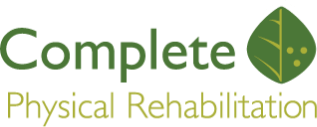You’re walking across the park on a bright summer day when your foot accidentally steps in a hole. Before you know it, you’re in agony, crumpled in a heap, hoping no one notices your fall.
Been there before? We get it — it’s embarrassing, but it’s painful!
So, what exactly do you do? How do you tell if an injury will heal on its own and when you should seek treatment from a physical therapist? The easiest way to find out is to call one right now to see if your sprain, strain, or ankle pain requires further treatment.
What is the difference between sprains and strains?
When it comes to ankles, this is one of the most commonly asked questions of a physical therapist. It’s actually much easier to differentiate between the two than you might think.
But before we can talk about the difference between a sprain and a strain, you need to know the difference between a tendon and a ligament. Tendons are strong, fibrous tissue that connects bone to muscle. Ligaments are similar types of strong connective tissues that bond one bone to another bone.
A sprain happens when the ligaments of a joint (your ankle, knee, wrist, elbow, etc.) are twisted so violently that these strong connective tissues are stretched or slightly torn.
Typically, with a sprain, the joint remains in place. A sprain can be mild resulting in only a few minutes or hours of pain, or it can be more severe, requiring physical therapy or even surgery.
A strain happens when the tendons that connect a muscle to bone are stretched or slightly torn. There are two types of strains—acute and chronic.
Acute strains happen as a result of an injury. You may slip on ice and fall, straining a muscle in your leg while you try to balance yourself. Chronic strains happen when you perform the same motion over and over.
Gymnasts, tennis players, golfers, and other athletes are likely to develop strains when they are not properly conditioned, do not stretch, or use improper equipment.
If you think you may be in need of physical therapy intervention for your sprain or strain, don’t hesitate to contact us. One of our physical therapists will evaluate the injured area to determine the best course of treatment for your needs.
How a PT can help relieve pain from sprains and strains
Interestingly enough, working with a physical therapist has more benefits than simply regaining your strength after an injury.
These medical professionals are highly trained movement experts who not only can help you recover from a sprain or strain, they can help you prevent injuries in the future. A physical therapist also offers drug-free pain relief that keeps you mobile and strengthens your body.
Physical therapy for a sprain or strain typically follows three steps. In the acute phase of the injury, pain relief is one of the primary goals. Severe sprains or strains are often painful.
If surgery is warranted to reconnect a ligament or tendon or repair a muscle, pain management will often make the difference between a patient who works hard in therapy and one who does not.
A physical therapist will offer several pain-relieving techniques—ice, heat, ultrasound, TENS, massage, and stretching. They will also teach patients how to administer these treatments on their own.
Your physical therapist will work on mending the injury in the second phase of physical therapy. The first two phases usually go hand in hand as your physical therapist works to help you restore motion in the joint where the sprain occurred or in the strained muscle.
After the injury has healed, a physical therapist will focus on injury prevention. If you don’t get the correct treatment after spraining a joint, you’re more likely to do it again.
The same is true of strains. Strengthening the muscles surrounding an injured area can typically prevent future issues.
Are you looking for pain relief? Give us a call today
For more information or to find out more about physical therapy’s effects on sprains and strains, call us today. You don’t have to hope and pray that your pain dissipates on its own! It’s important to make sure the right attention is given to your injury so that it can heal properly and cause you as little discomfort in the future as possible. Our therapists are skilled movement specialists who know the best ways to help you recover and prevent future sprains and strains from occurring, so what are you waiting for? Pick up the phone today and give us a call!

